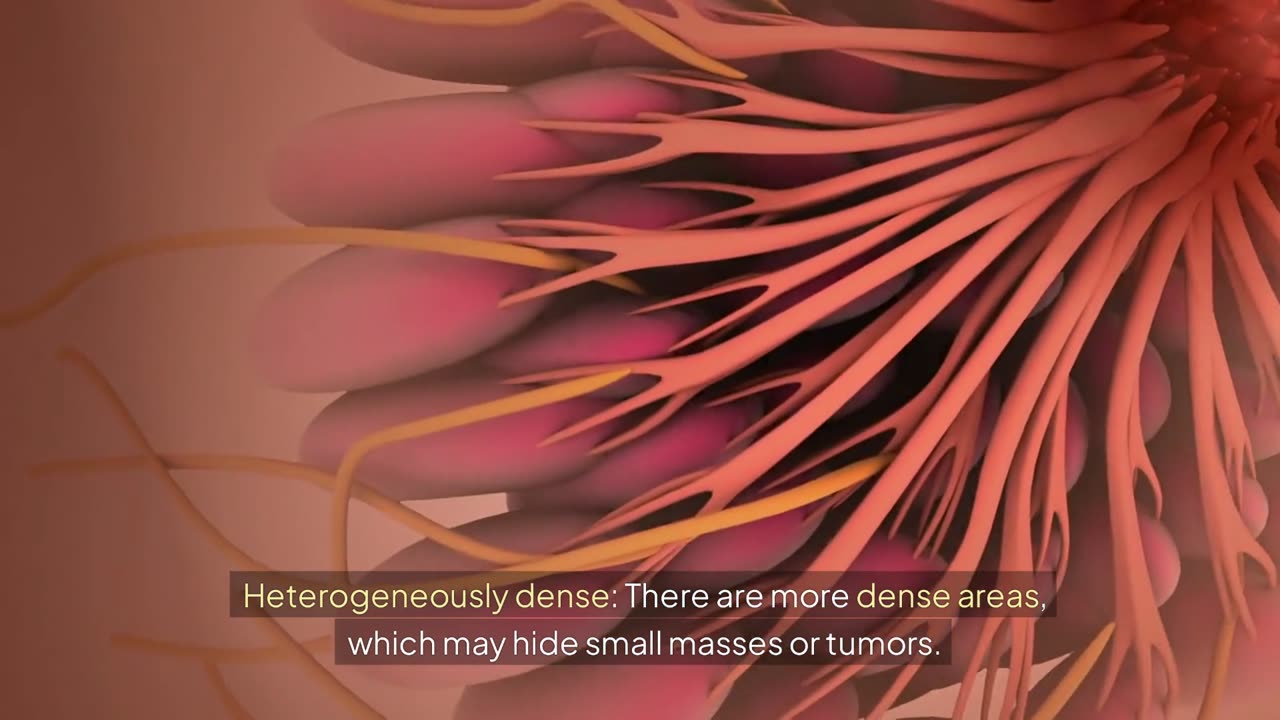Premium Only Content

Big Changes in Mammogram Results: What You Need to Know About Breast Density**
---
**Introduction: A New Era in Mammogram Screenings**
Breast cancer screenings are about to get a significant upgrade, and it could be a game-changer for early detection. Starting September 10, 2024, the U.S. Food and Drug Administration (FDA) requires that all individuals undergoing mammograms receive detailed information about their breast density. But what exactly is breast density, and why does it matter? This change could be the key to catching breast cancer earlier, particularly for women with dense breast tissue. In this article, we’ll break down what you need to know about this new regulation, how breast density impacts cancer screenings, and what steps you can take to stay informed about your health.
---
### **1. Understanding Breast Density: More Than Meets the Eye**
If you’re like most people, the term “breast density” may not be familiar, but it’s crucial when it comes to detecting breast cancer. Breast density refers to the amount of fibrous and glandular tissue versus fatty tissue in your breasts. According to the National Cancer Institute, dense breasts have less fat and more glandular and fibrous tissue.
Why is this important? Dense tissue appears white on a mammogram, just like lumps and tumors, making it harder to detect abnormalities. This means that a traditional mammogram could miss signs of cancer in women with dense breasts, putting them at a higher risk of undetected tumors. Breast density isn’t something you can feel or see through self-examination; it’s only detectable through a mammogram, which is why this new FDA rule is so important.
---
### **2. The New FDA Rule: What Will Change for You**
So, what exactly does the new FDA regulation entail? In the past, after a mammogram, you might have received a general overview of your results without any mention of breast density. Now, facilities are required to include breast density information as part of the mammogram report. This addition provides essential insights that were previously unavailable to patients.
Under the new guidelines, breast density will be categorized into four levels:
- **Almost entirely fatty**: The breasts contain mostly fat, which makes it easier to detect abnormalities.
- **Scattered areas of fibroglandular density**: Some dense tissue is present, but it’s not widespread.
- **Heterogeneously dense**: More areas of dense tissue, which could obscure small masses or lumps.
- **Extremely dense**: A high level of dense tissue, making it difficult to see through the tissue in a mammogram.
Receiving this information will allow individuals to have more meaningful conversations with their healthcare providers about their breast cancer risk and possible next steps.
---
### **3. How Dense Breasts Impact Cancer Detection**
While dense breasts are common—especially in women over 40—they do present a unique challenge when it comes to mammograms. As previously mentioned, dense breast tissue can make it harder to spot tumors because both appear white on a mammogram. This means that even if you’re getting regular screenings, breast cancer could be hiding in plain sight.
Beyond detection issues, having dense breasts is itself a risk factor for developing breast cancer. Studies have shown that women with extremely dense breasts are up to six times more likely to develop breast cancer compared to those with less dense breasts. However, many people are unaware of this risk because breast density has traditionally not been communicated after screenings.
With the FDA’s new rule in place, individuals with dense breasts will be better informed, potentially leading to earlier detection through additional screening methods, such as MRI or ultrasound, if necessary.
---
### **4. What Should You Do If You Have Dense Breasts?**
If your mammogram report indicates that you have dense breasts, it’s essential not to panic but to take proactive steps. First and foremost, talk to your healthcare provider about your breast density and your overall risk for breast cancer. If you fall into a higher-risk category due to family history or other factors, your doctor may recommend additional screening options.
The American Cancer Society suggests that women at high risk, including those with dense breasts, consider getting an MRI in addition to their mammogram. While a mammogram is an excellent tool for detecting cancer, an MRI can provide clearer images for those with dense breast tissue. Your healthcare provider can guide you on whether this is necessary based on your individual risk profile.
---
### **5. New Screening Guidelines: What Age Should You Start?**
Another important development in breast cancer screening is the updated guidelines for when women should begin getting mammograms. Previously, the U.S. Preventive Services Task Force recommended that women start screenings at age 50 unless they had specific risk factors, like a family history of breast cancer. However, in April 2024, the guidelines were revised, recommending that women begin mammograms at age 40. This shift reflects new data that shows starting screenings earlier can help catch cancer in its early stages, particularly for those at higher risk, including women with dense breasts.
The combination of earlier screenings and more detailed information about breast density could make a significant difference in breast cancer outcomes. Early detection is one of the most critical factors in successful treatment, and these new guidelines provide an opportunity for more women to catch cancer before it progresses.
---
**Conclusion: Knowledge Is Power—Stay Informed About Your Health**
With the FDA’s new requirement to include breast density in mammogram results, individuals now have access to more comprehensive information about their breast cancer risk. Understanding your breast density is crucial, as it directly impacts how effectively cancer can be detected through traditional mammograms. By staying informed and discussing your options with your healthcare provider, you can take proactive steps to ensure you’re doing everything possible to catch breast cancer early.
As new guidelines suggest starting mammograms at age 40, this is the perfect time to schedule your screening and begin the conversation about breast density. Remember, knowledge is power, and staying informed about your health is the first step in protecting yourself from breast cancer.
If you found this article helpful, don’t forget to like, comment, and subscribe to stay updated on the latest health news. Share this article with others to spread awareness about the new mammogram regulations and the importance of breast density in cancer screenings. Together, we can help more people understand their risks and make informed decisions about their health.
-
 LIVE
LIVE
Matt Kohrs
10 hours agoStocks Push New Highs, Breaking Market News & Live Trading $1M w/ AI
764 watching -
 LIVE
LIVE
Wendy Bell Radio
6 hours agoNo One Is Above The Law
9,694 watching -
 LIVE
LIVE
LFA TV
13 hours agoLFA TV ALL DAY STREAM - THURSDAY 7/24/25
3,367 watching -
 LIVE
LIVE
StoneMountain64
1 hour agoBattlefield 6 Trailer REVEAL
119 watching -
 34:19
34:19
The Official Corbett Report Rumble Channel
11 hours agoThe Blueprint for AI Government Revealed with Jacob Nordangård
3.82K7 -
 LIVE
LIVE
LumpyPotatoX2
1 hour agoOFF THE GRID + OpenSeas Release - #RumbleGaming
108 watching -
 1:21:47
1:21:47
JULIE GREEN MINISTRIES
3 hours agoUNPRECEDENTED MOVES ARE BEING MADE TO BRING BACK THE GOLD STANDARD IN THIS NATION
130K145 -
 LIVE
LIVE
PudgeTV
10 hours ago🟠 Gaming on Rumble | Star Wars Battlefront 2
63 watching -
 LIVE
LIVE
Pepkilla
1 hour agoWatch Party BO6 Esports Word CUP
16 watching -
 1:26:49
1:26:49
Chicks On The Right
4 hours agoKohlberger gets BLASTED, Macrons sue Candace, Tulsi goes after Obama, and more on Epstein files
29.4K2